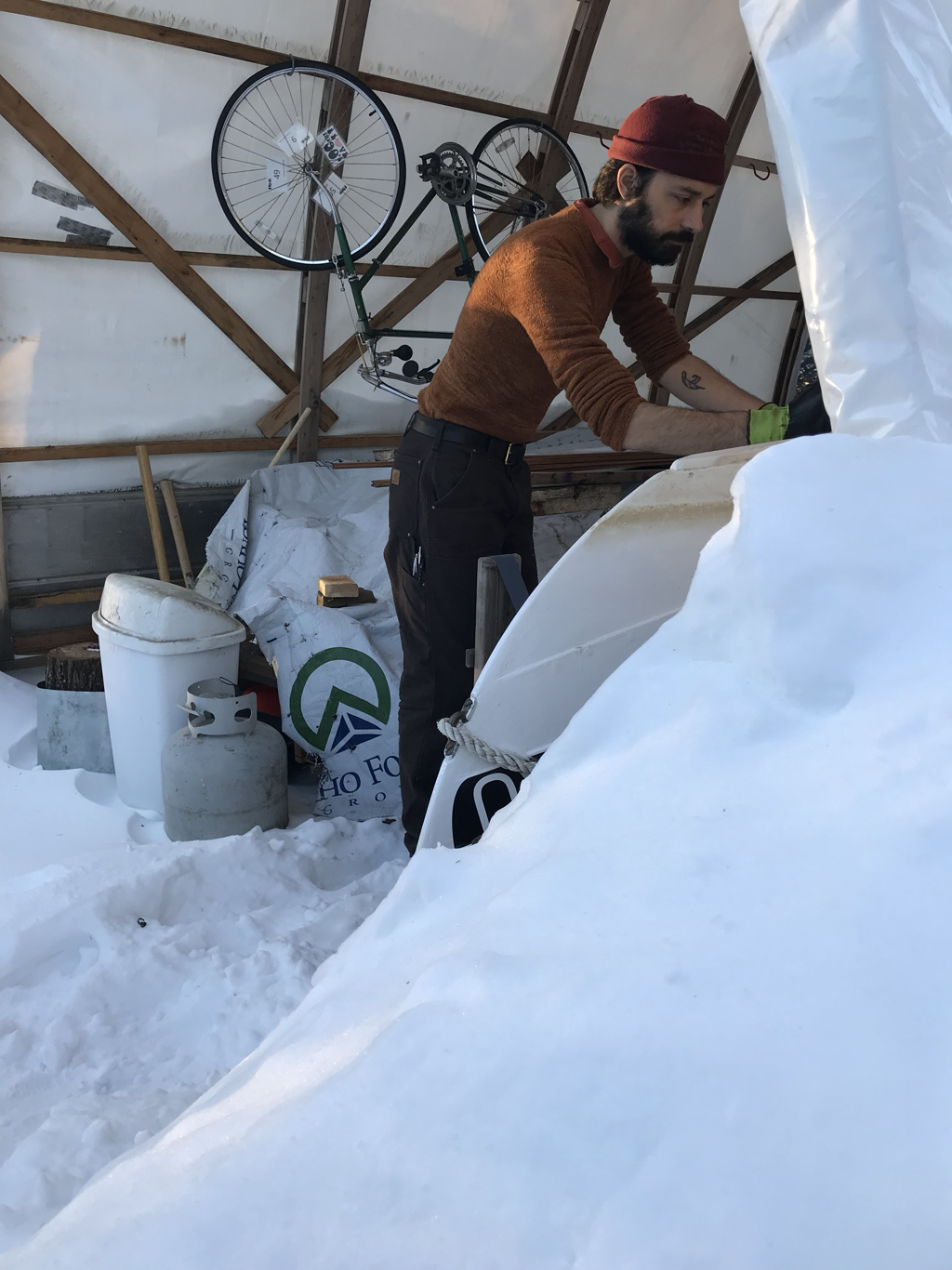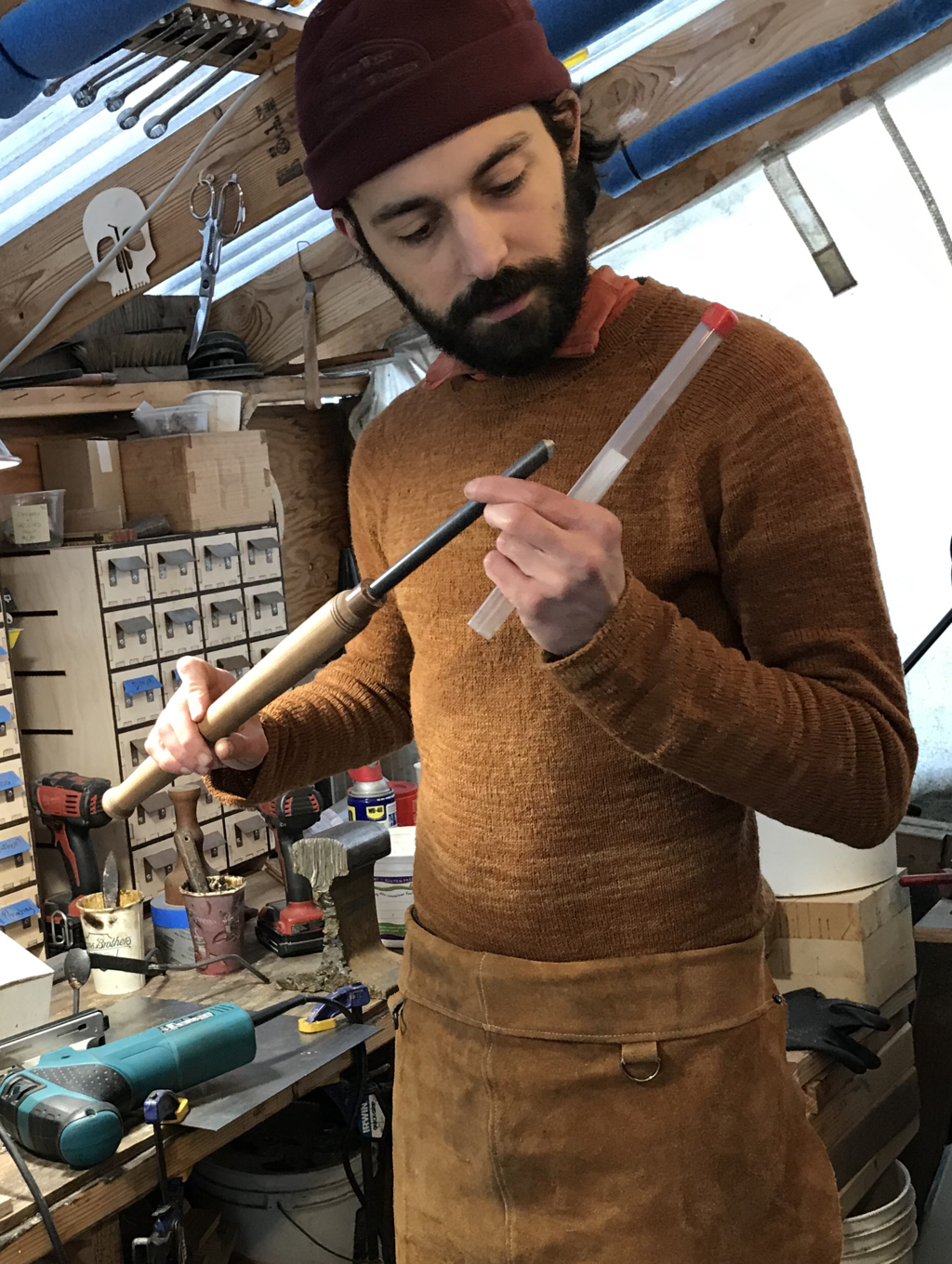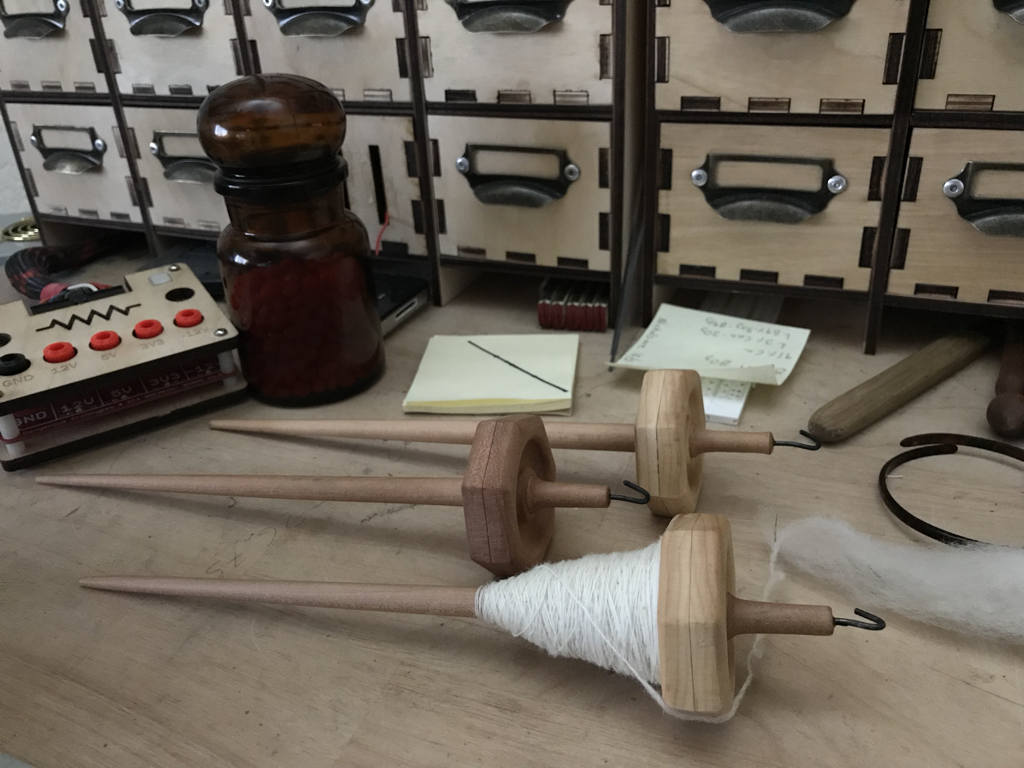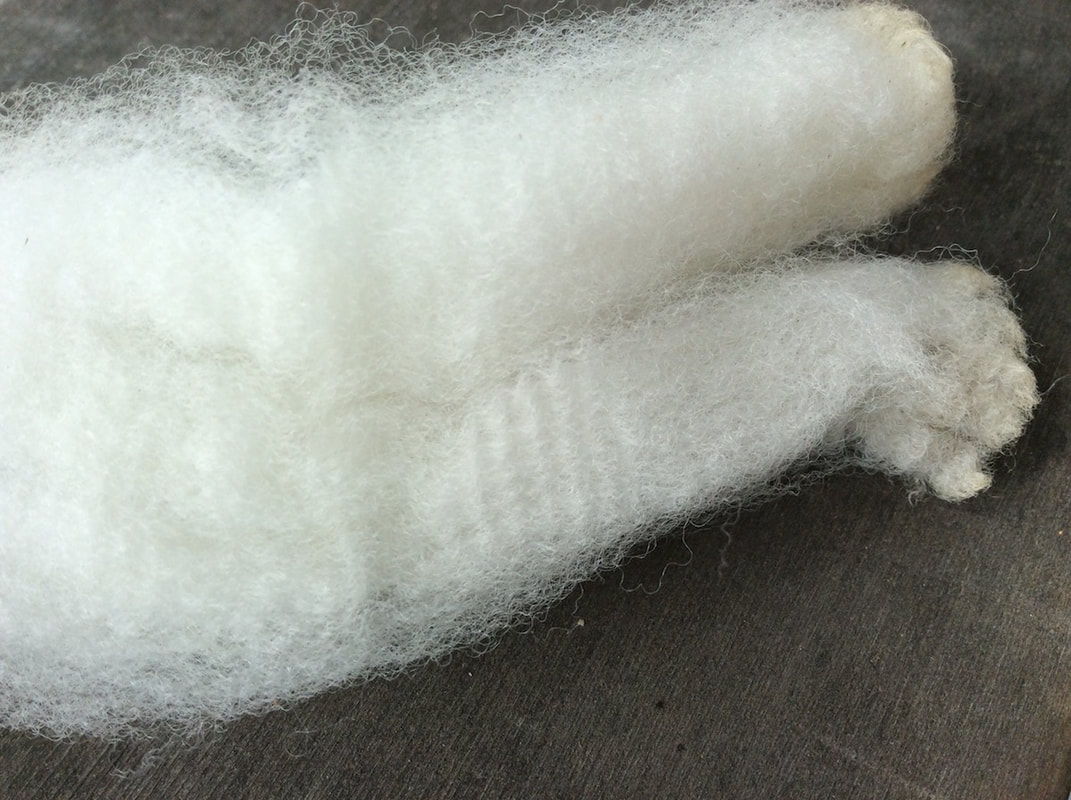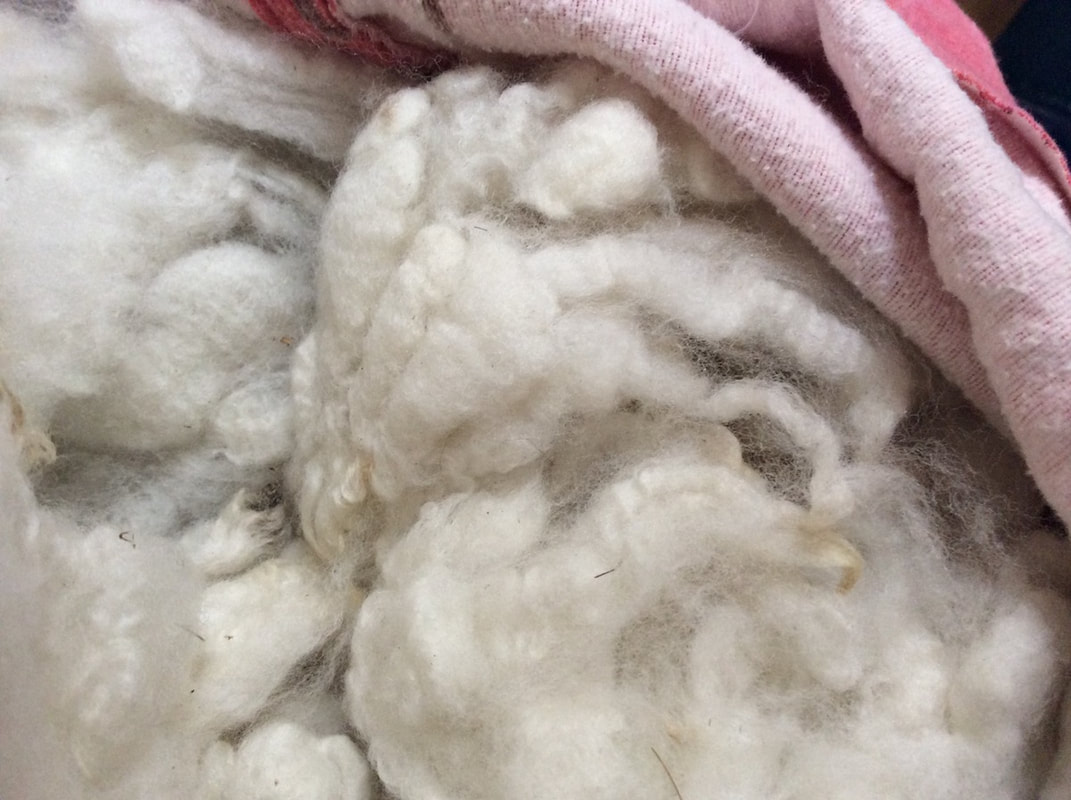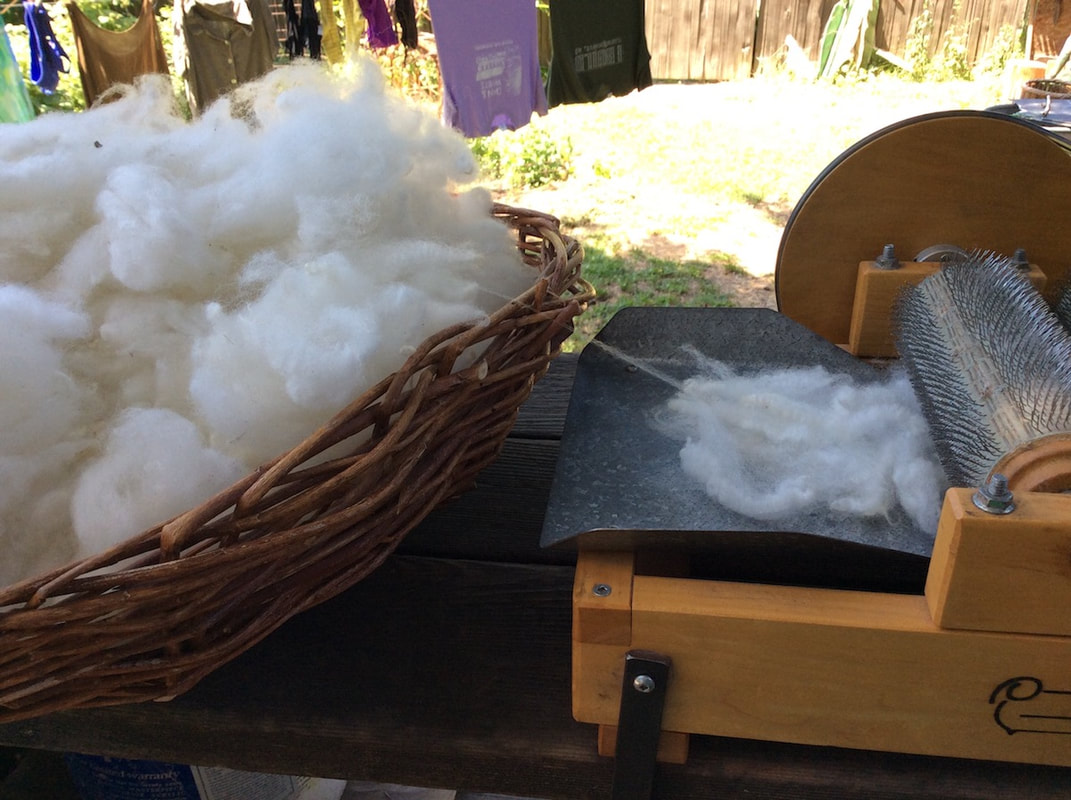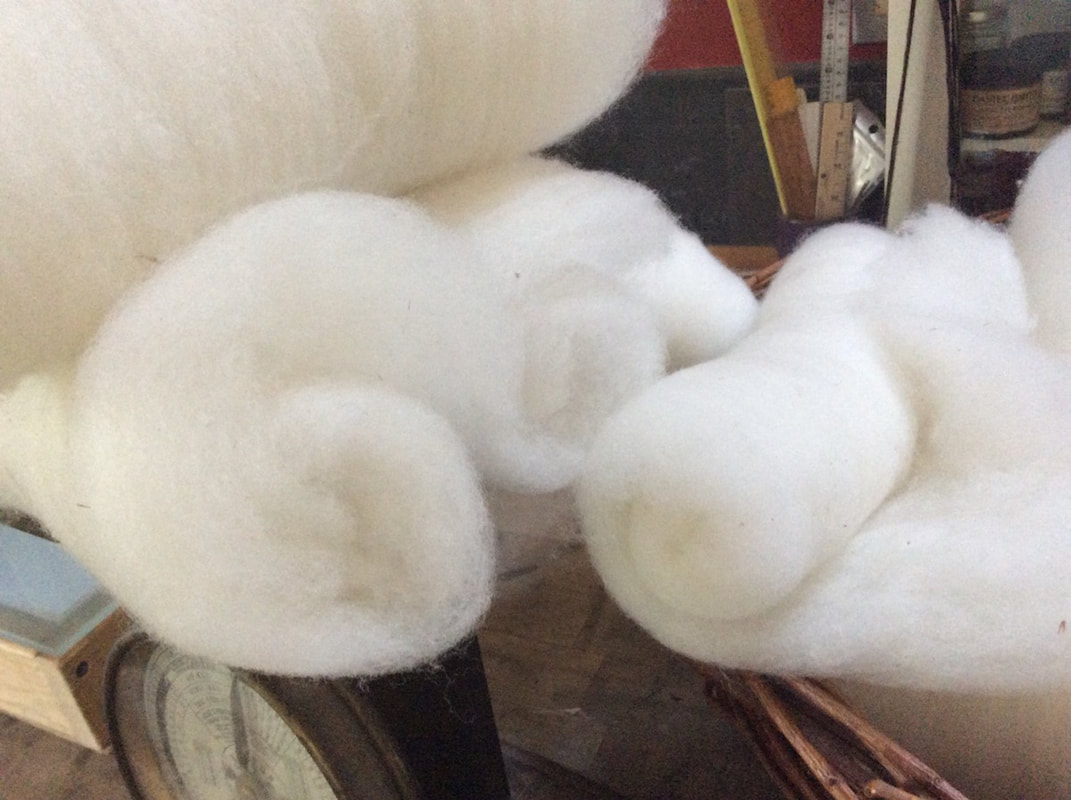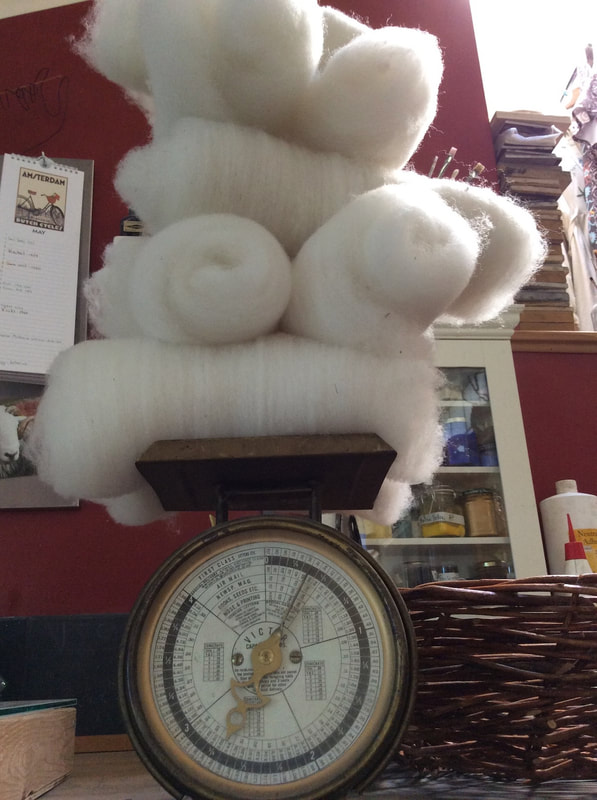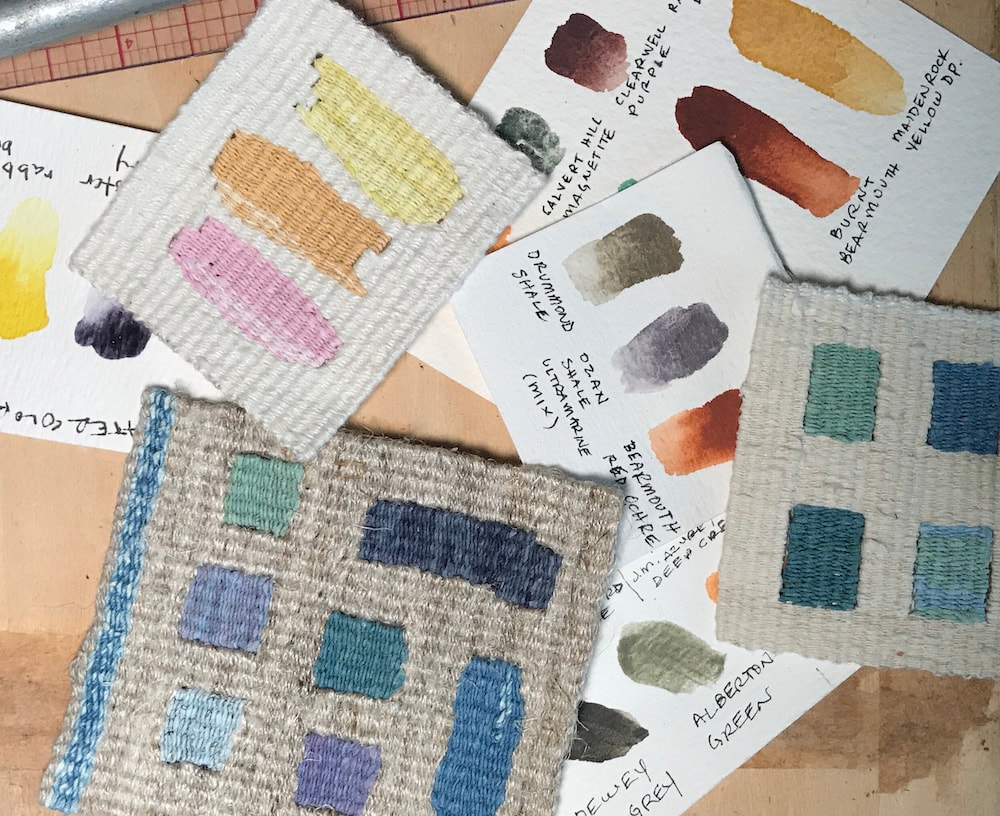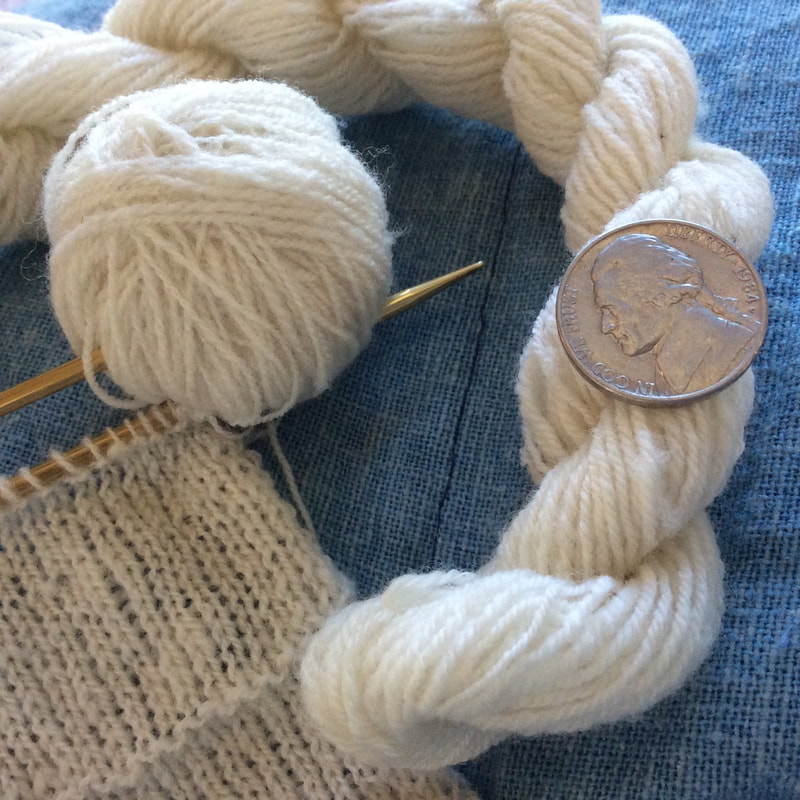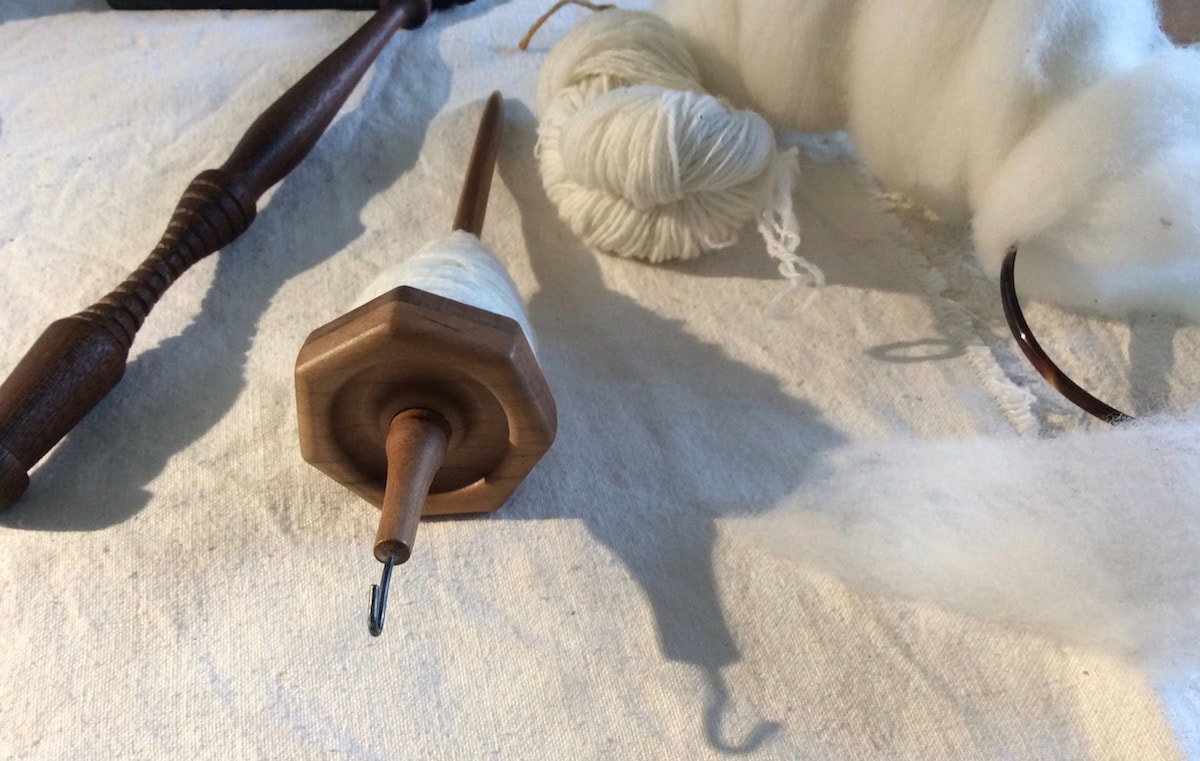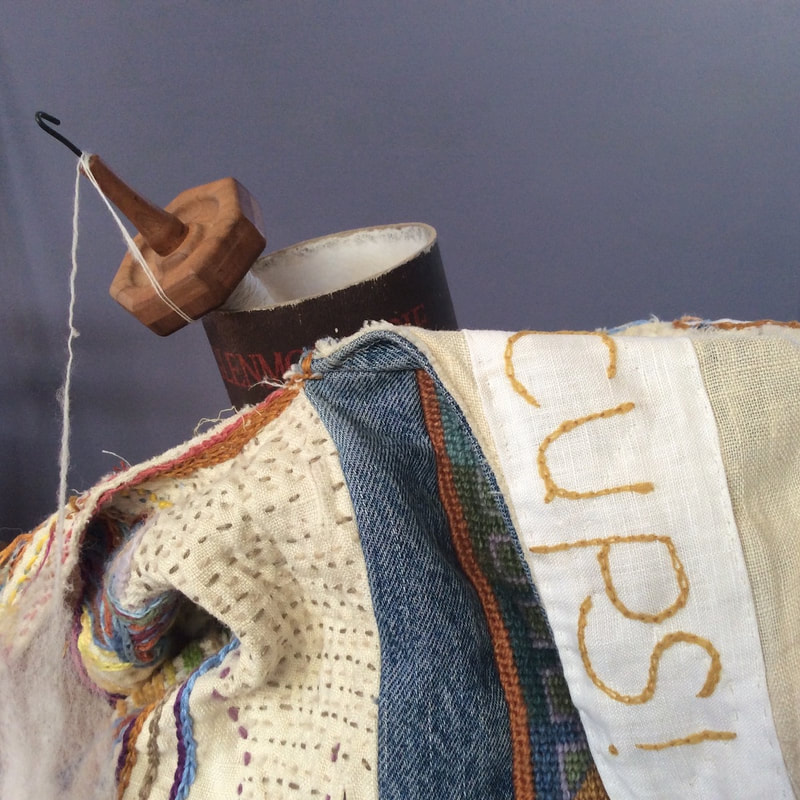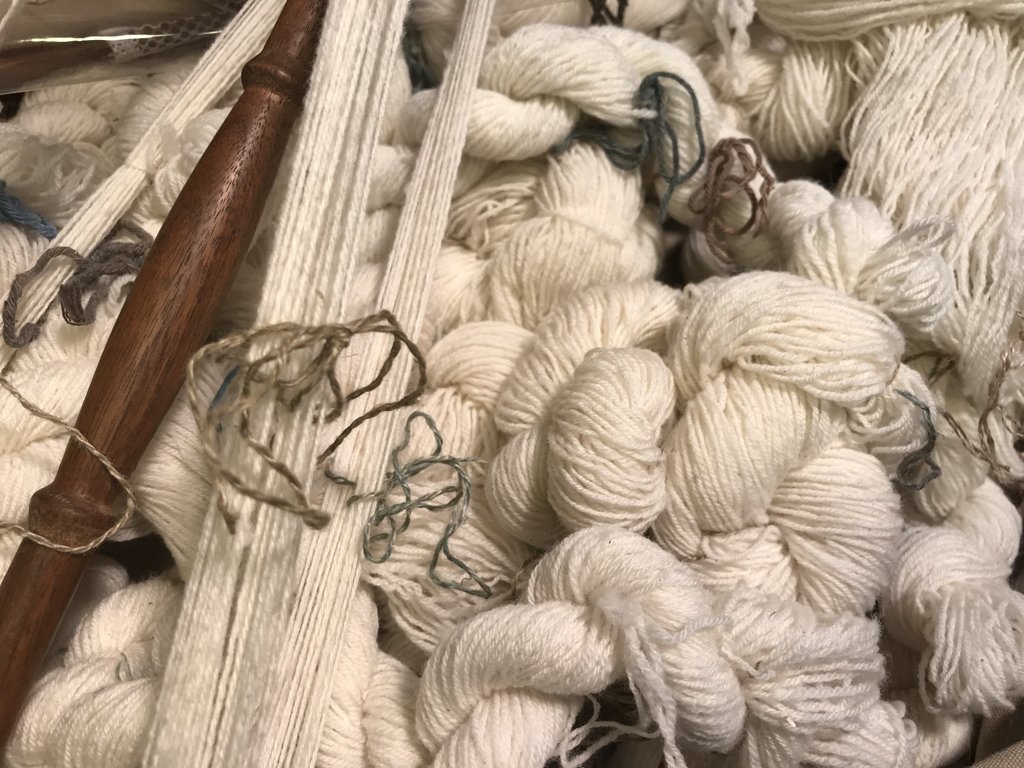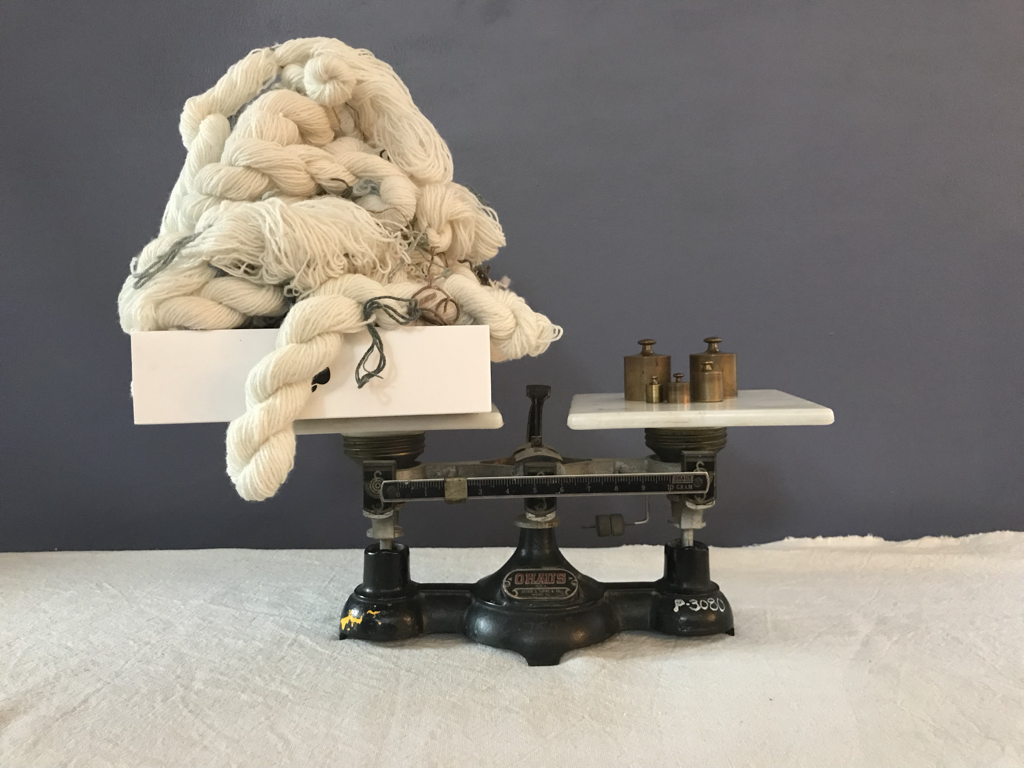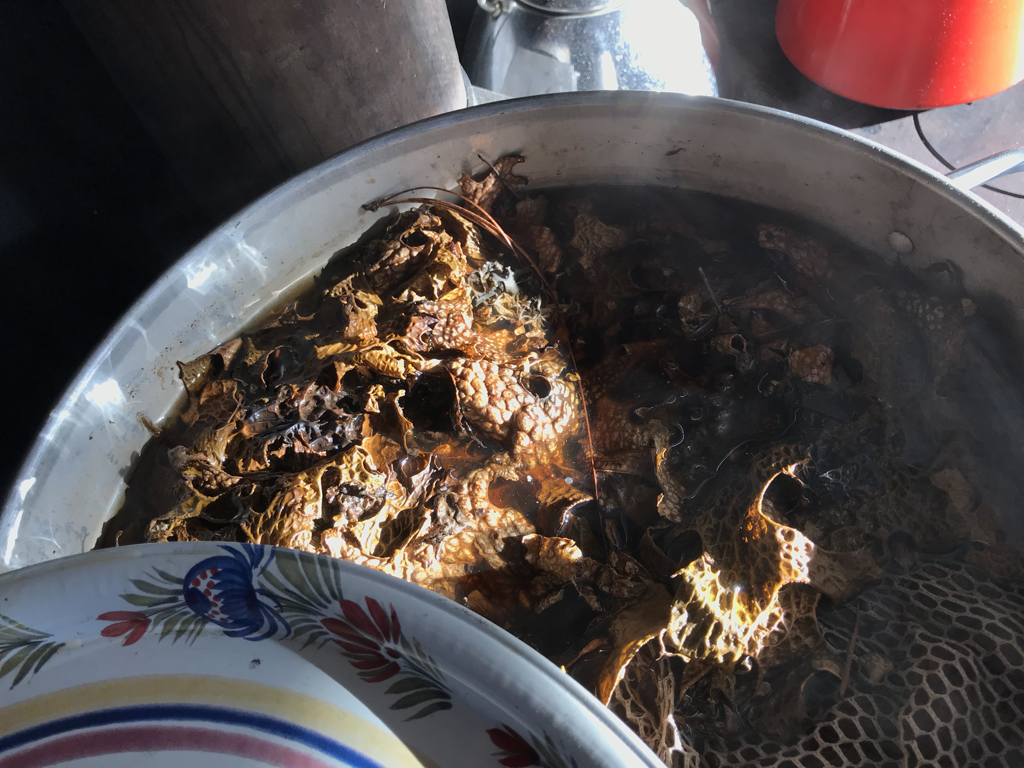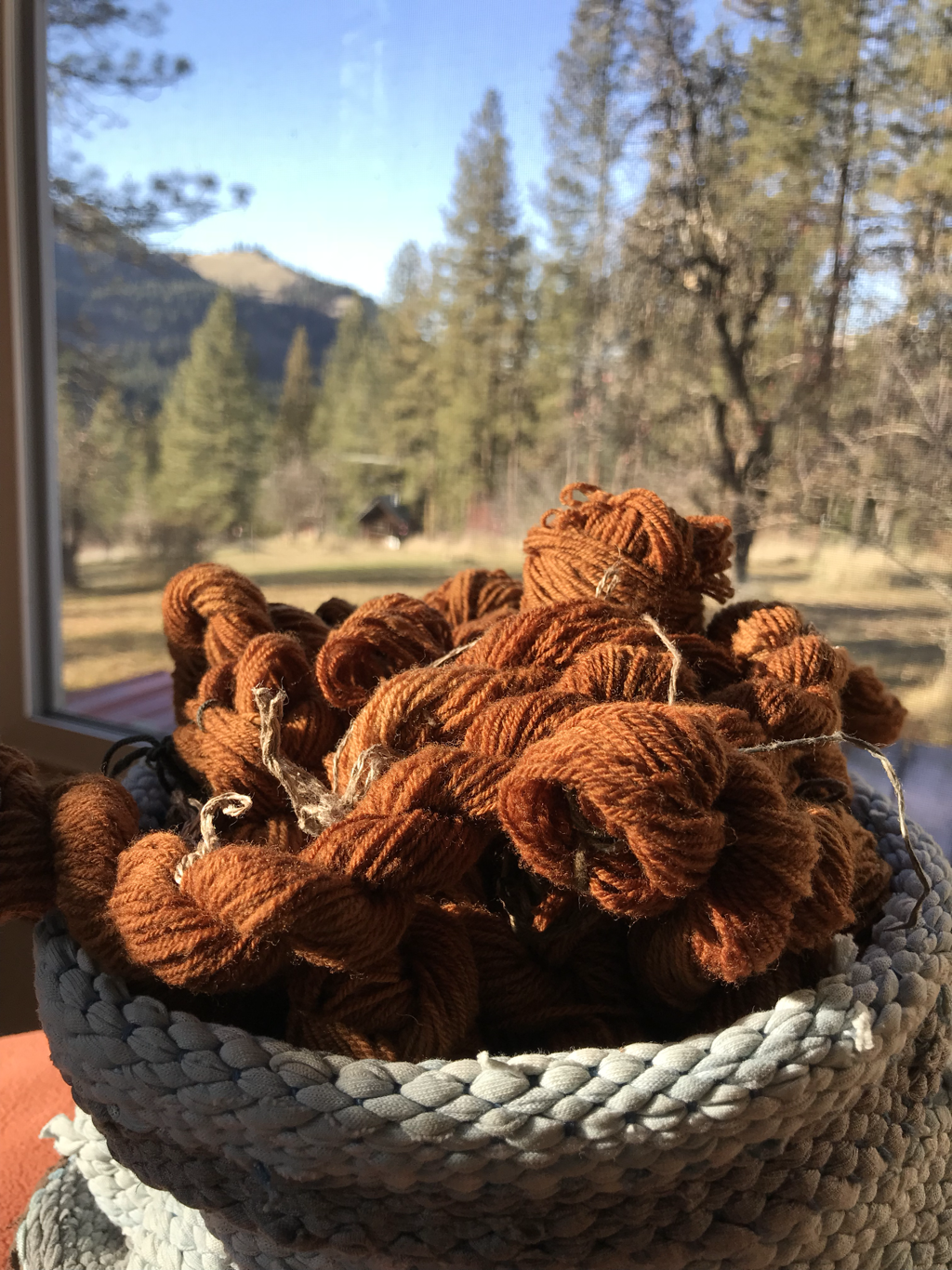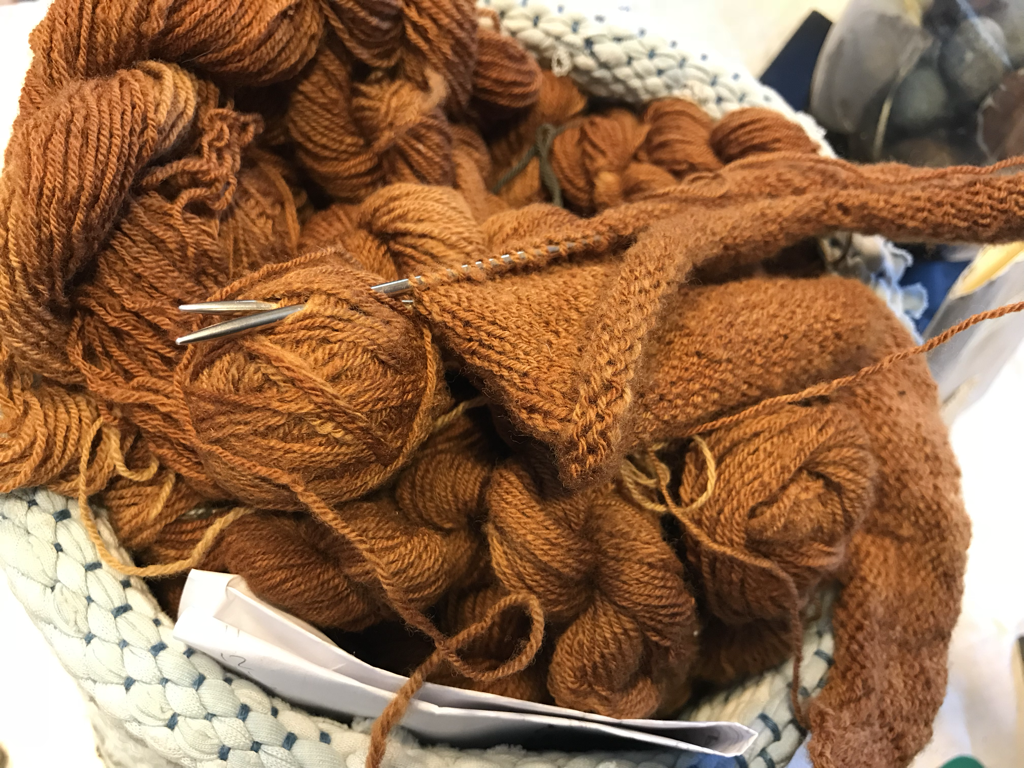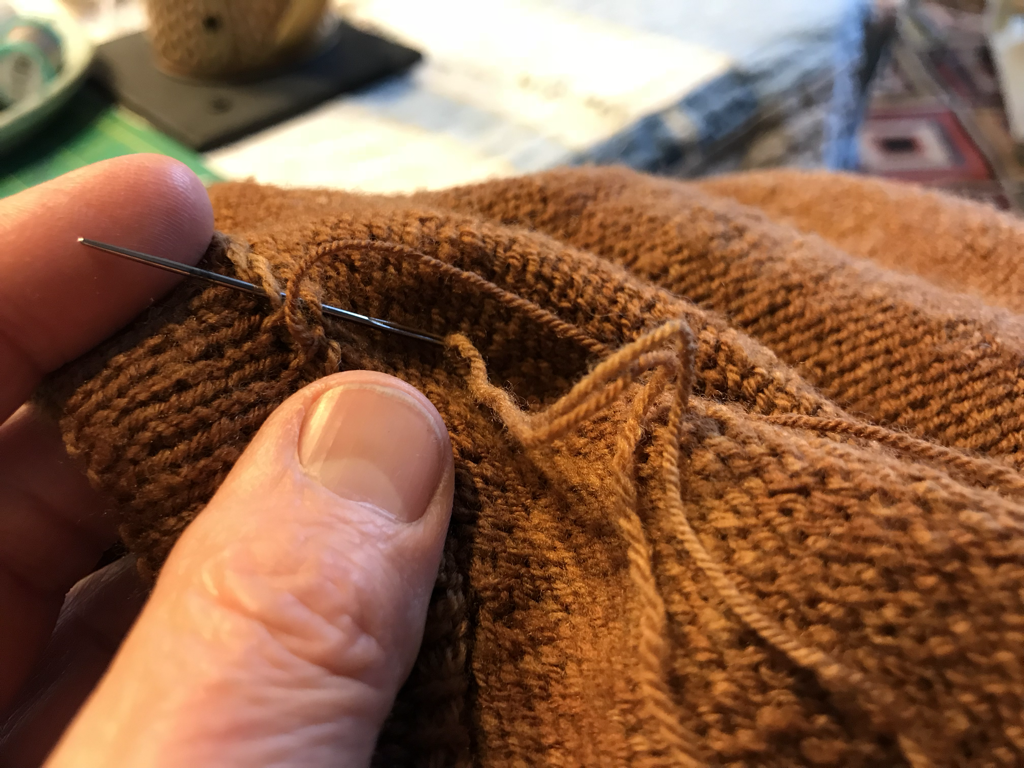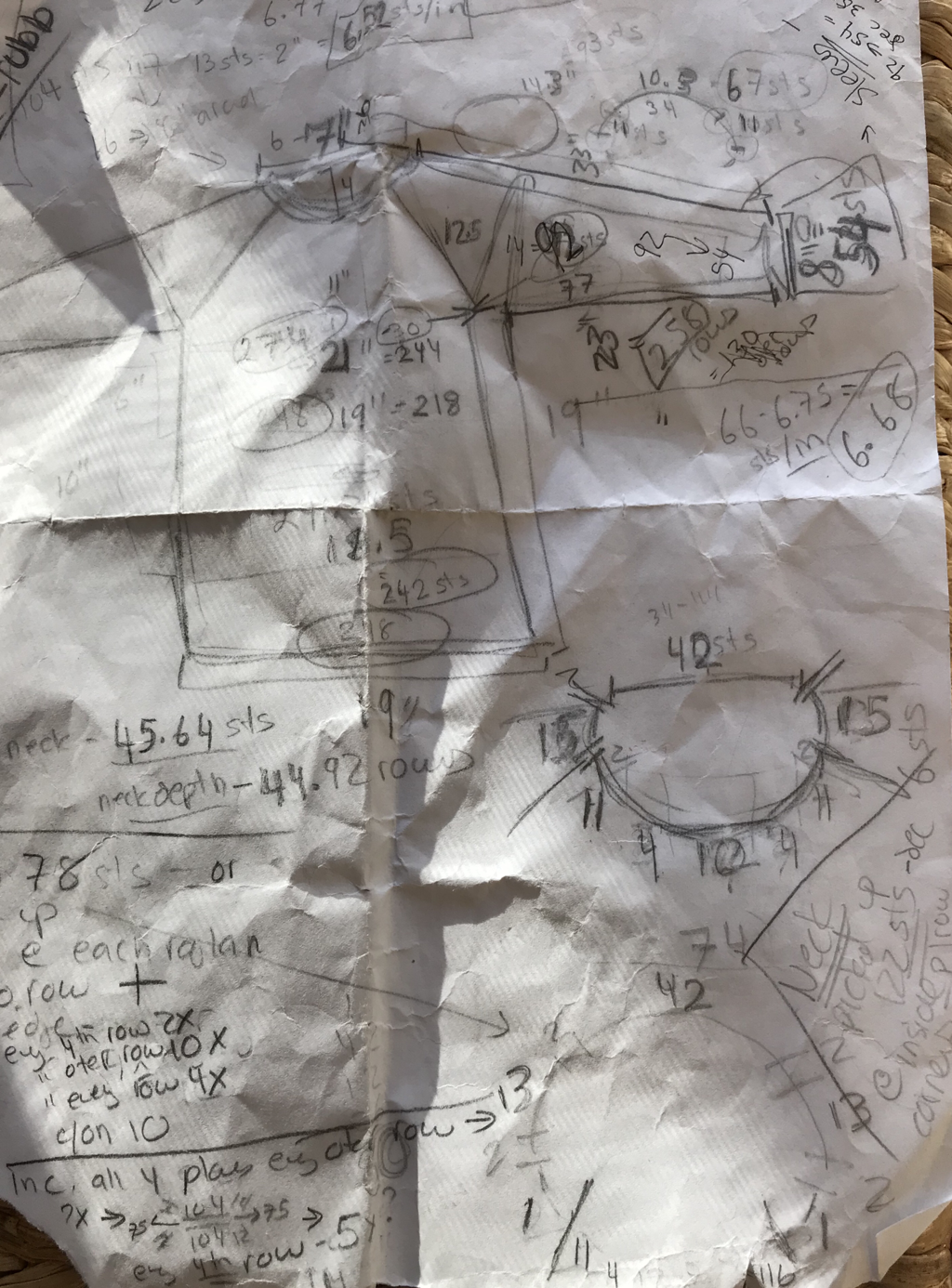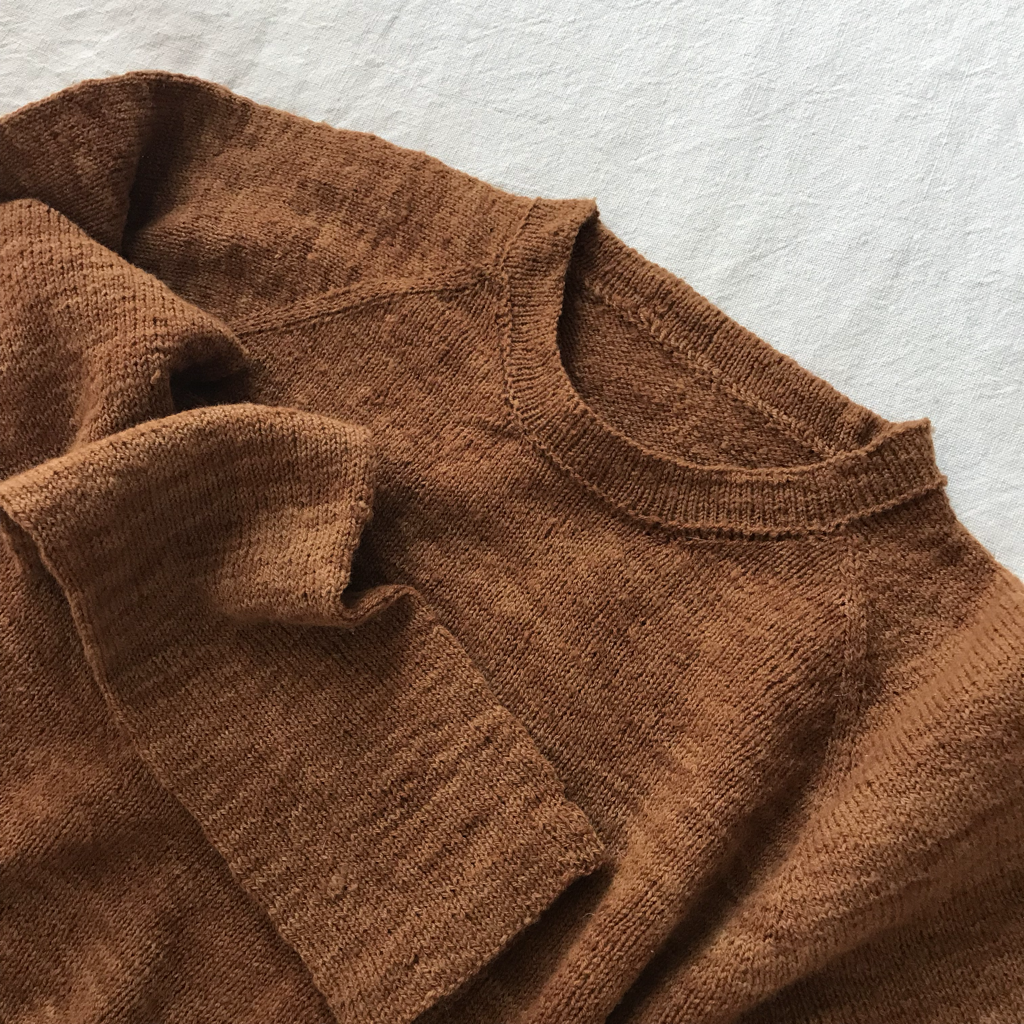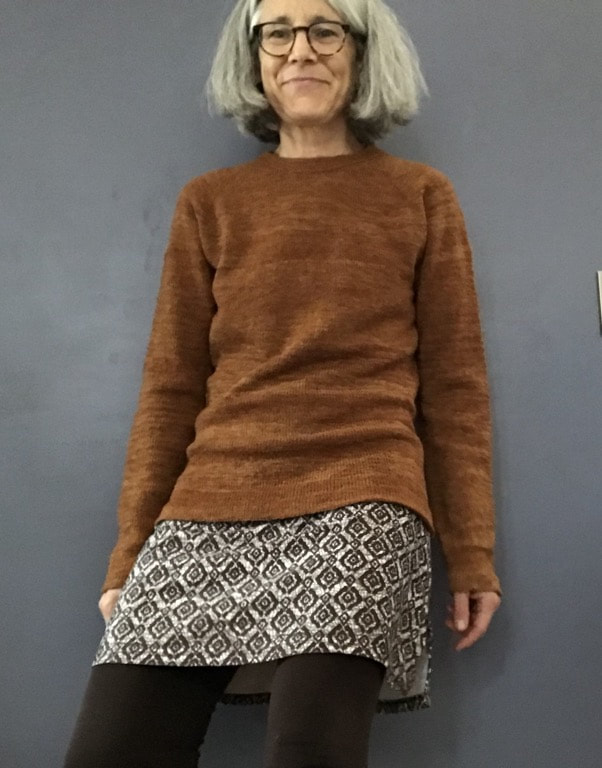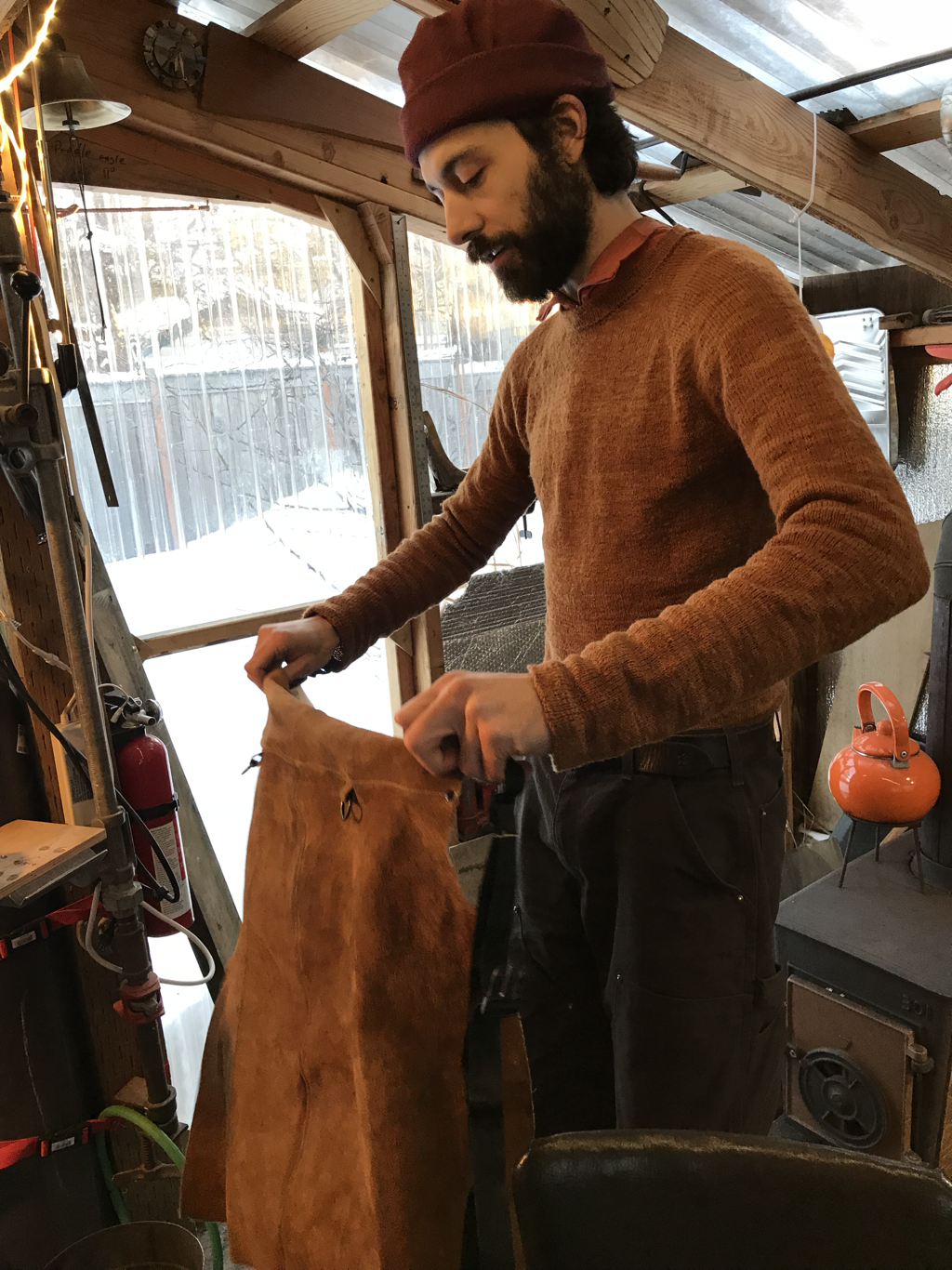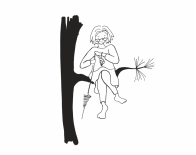so the wool shirt Henry asked for last spring
that I finished yesterday,
is still just the thing.
His shop does have a wood stove,
but one wall is an old sail
and to actually get work done,
wool layers are essential.
Henry is also the son of a spinner
and a couple of years ago
he designed a spindle
that just happens to be perfect
for the yarn I like to make.
Indeed, many of the spindle photos on this blog are of Hepty #1
which I’ve used almost exclusively since I snatched it out of Henry’s hands two years ago.
(Once in a while he makes a few to sell-- the Heptys
in the photo above are waiting for their very own spinners--
and since I was visiting I got to try them all...)
At any rate, from Henry’s first casual request for a shop shirt
there was no question as to how I’d spin the yarn.
I ordered one from the Ortmann’s in Wolf Point, Montana.
Their marvelous fine fleeces have been a staple (pun sort of intended)
of my spinning life for years (Cormo, Polworth, Debouillet),
and this time I chose a Targhee/Debouillet cross--
out of curiosity and a desire for something both next-to-the-skin soft and wearably robust.
The fleece was (and still is), lovely.
don’t feel like they are covered with sandpaper when I touch it
as sometimes happens with superfine fleeces.
fine, light and very stretchy— would begin with three ply yarn.
as it is so easy to chain the singles from my spindle onto a plying stick
(at left in the photo below), and then add twist when plying back onto the spindle.
—note: I wrote about plying sticks in the same February 2, 2016 blog post linked above, so no need to click again if you clicked on that one!
with the tools at hand, wherever I am.
provided the dyestuff.
I went there for a few solo days in early December,
enjoying the full circle satisfaction of dyeing on a wood cook stove
using the same aluminum pot in which I dyed my first yarn ever,
while living in the tiny house you can see a couple of photos down,
back in 1985.
but I didn’t want bits of lichen in the skeins
so put the yarn in a net bag
and the net bag in the pot with the simmering lichen.
but it is luscious nonetheless,
And certain amount of a abrash can be a fine thing
on an otherwise unadorned garment.
all in stockinette stitch, which means i could read while knitting— always a plus for me.
He has things to make in his shop.
